Why It’s Truly Worth It to Buy Yourself a Mortar and Pestle
In a 5-year-old issue of SAVEUR magazine I found a very interesting article on the subject of mortars and pestles. Author, Max Falkowitz, made a compelling case for why it’s worth buying this little kitchen accessory. His bottom line was clear and simple: It’ll make you a better cook.
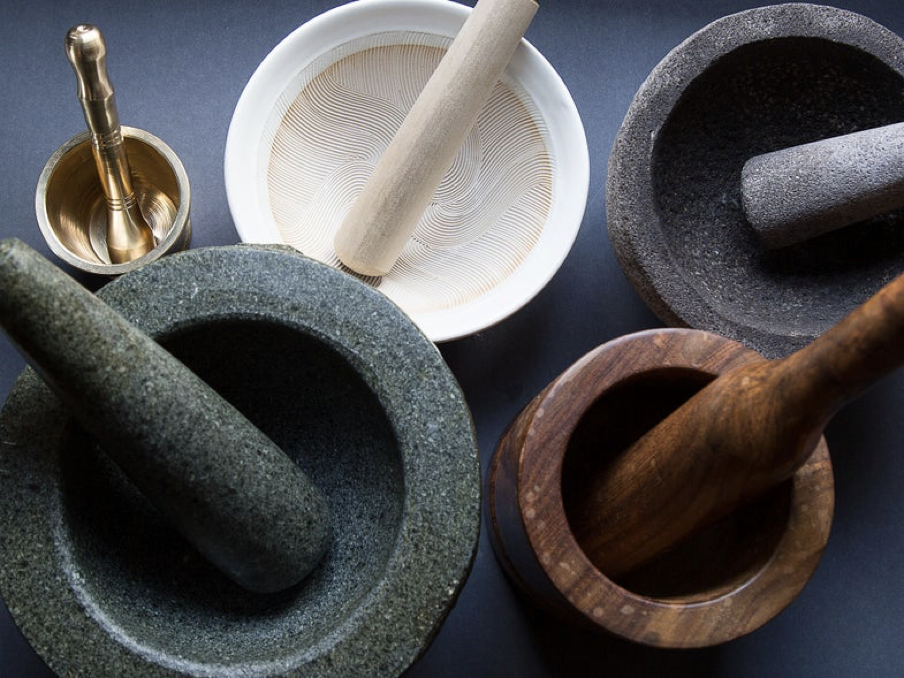
Max says this: “A mortar and pestle is one of those stubborn kitchen implements that you never really need, and recipes usually offer substitutions (quite creatively even, look at you crushing black pepper with a frying pan), and you can live a fully happy, productive, ethically fulfilling life without one—so you never buy it. And your food is, for the most part, fine.
“But every once in a while you go into one of your cooking phases. Maybe you want to make coconut chutney or curry paste completely from scratch, even when the canned stuff is pretty decent, or you want to mash your guacamole like the restaurants do, tableside. Or you see a recipe call for a tablespoon of ginger-garlic paste and you just cannot, for the life of you, imagine that your cobbled-together version with finely minced ginger and garlic could be as good. So you begin to wonder, maybe I do need one of those, even though it’s heavy and bulky and you have nowhere to put it.”
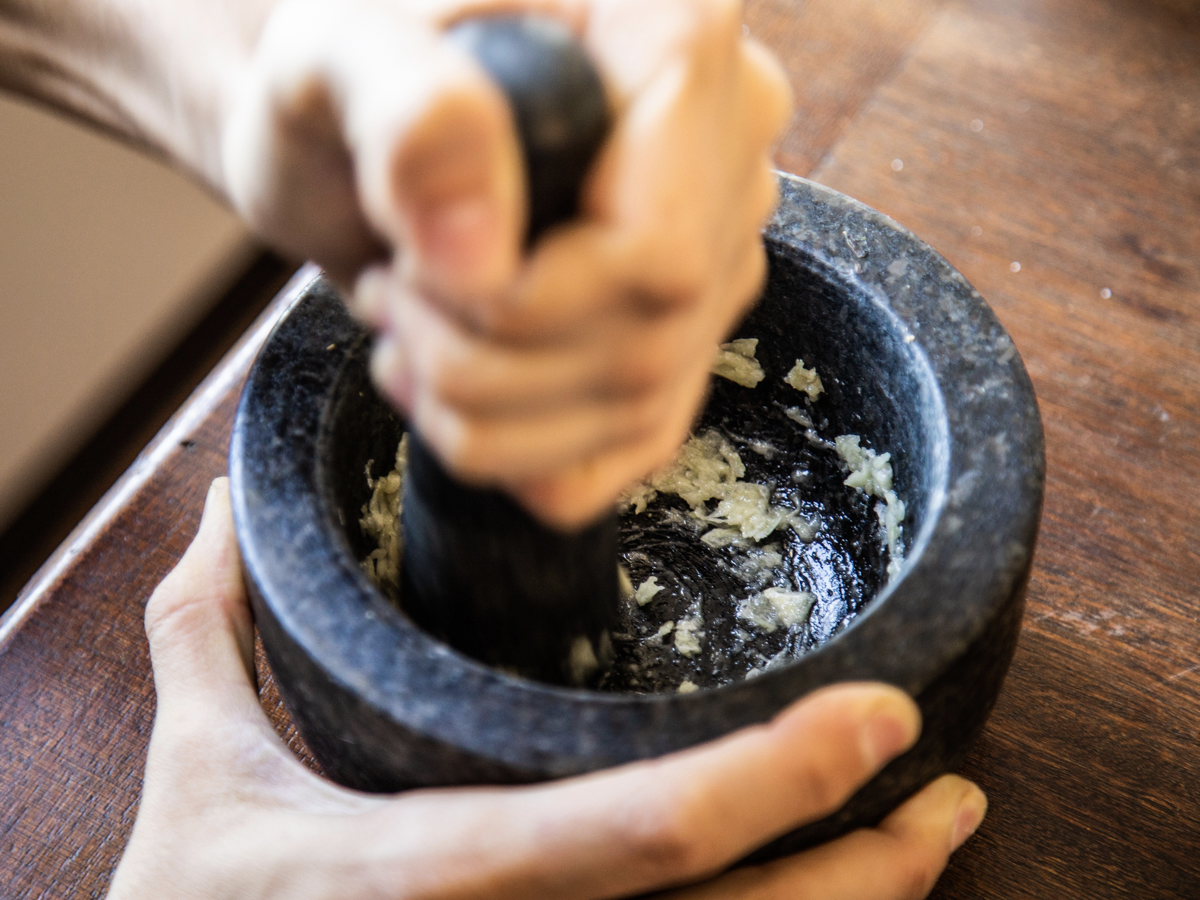
Max isn’t alone in his opinion on this topic. Every pro chef and food author I researched said the same thing. Get one…it’s important; you’ll figure out where to put it and you’ll go on to be a better cook forever.
And this is because the mortar and pestle is just better at what it does than anything else. Whether you’re getting hardcore about making curry paste or simply mushing up some herbs to spread over a roast chicken, this basic kitchen tool makes it better. Better than the sharpest knife, fastest blender, or most vicious food processor.
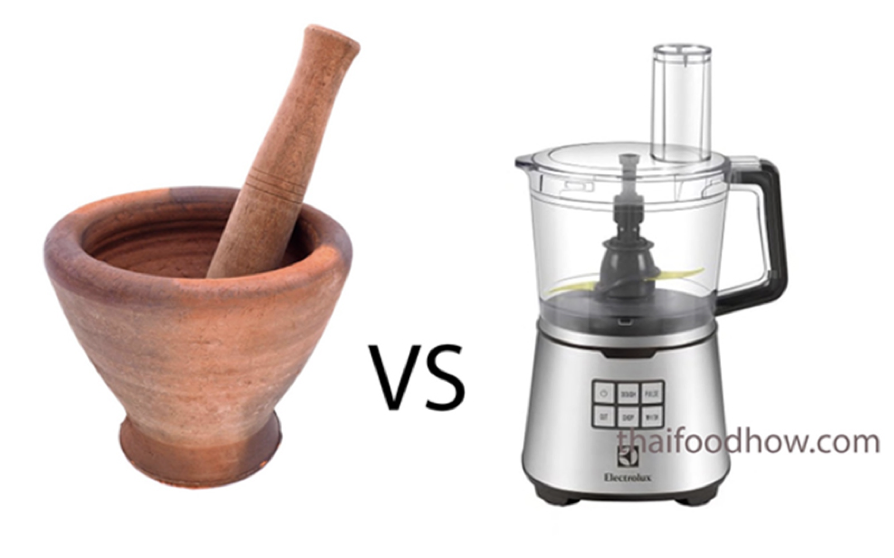
Why is it better? Max says the sciencey reason is simple: “A mortar and pestle crushes plants while a blade cuts them. And if you want to expel all the essential oils, full-bodied flavors, and unique body of a hunk of garlic or leaf of basil, crushing is the way to go. Plants are made of rigid, boxy structures that trap vital flavor inside. You need to rupture them to release that flavor, and crushing does so far more effectively than the thin blade of a knife.
“A mortar and pestle also does the job, paradoxically, with far less bruising to herbs than you’d get from finely mincing them or running them through a food processor. Since a mortar and pestle moves only as fast as your hand can, it won’t generate heat through friction like a food processor would. Not only does the old-fashioned way extract more flavor than a spinning blade, but it’ll keep those flavors brighter, too. Take pesto recipes, for instance. The only variable that truly makes a difference in the sauce’s creaminess and basil-ness is mixing it all together in a mortar and pestle. And the difference is always dramatic: brighter colors, bigger flavors.”
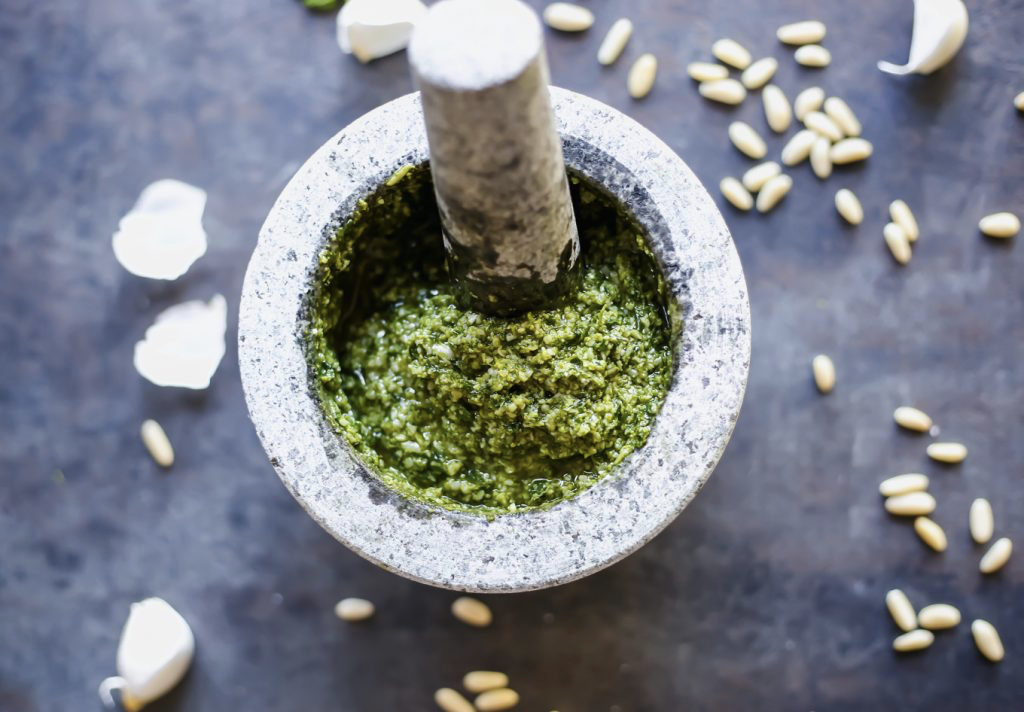
There’s also the matter of amounts. Need to crush a tablespoon of black pepper, or mix up garlic, lemon, and herbs for a gremolata? Good luck doing that well in even the smallest food processor. Spice grinders (a.k.a. coffee grinders) also aren’t well suited to the job. But a mortar and pestle is. And it’ll mash those ingredients up into a quasi-paste better than anything else. Add in some olive oil and the ingredients will perfume it all the better, and with enough mashing you’ll get a beautiful creamy condiment to put on pretty much everything.
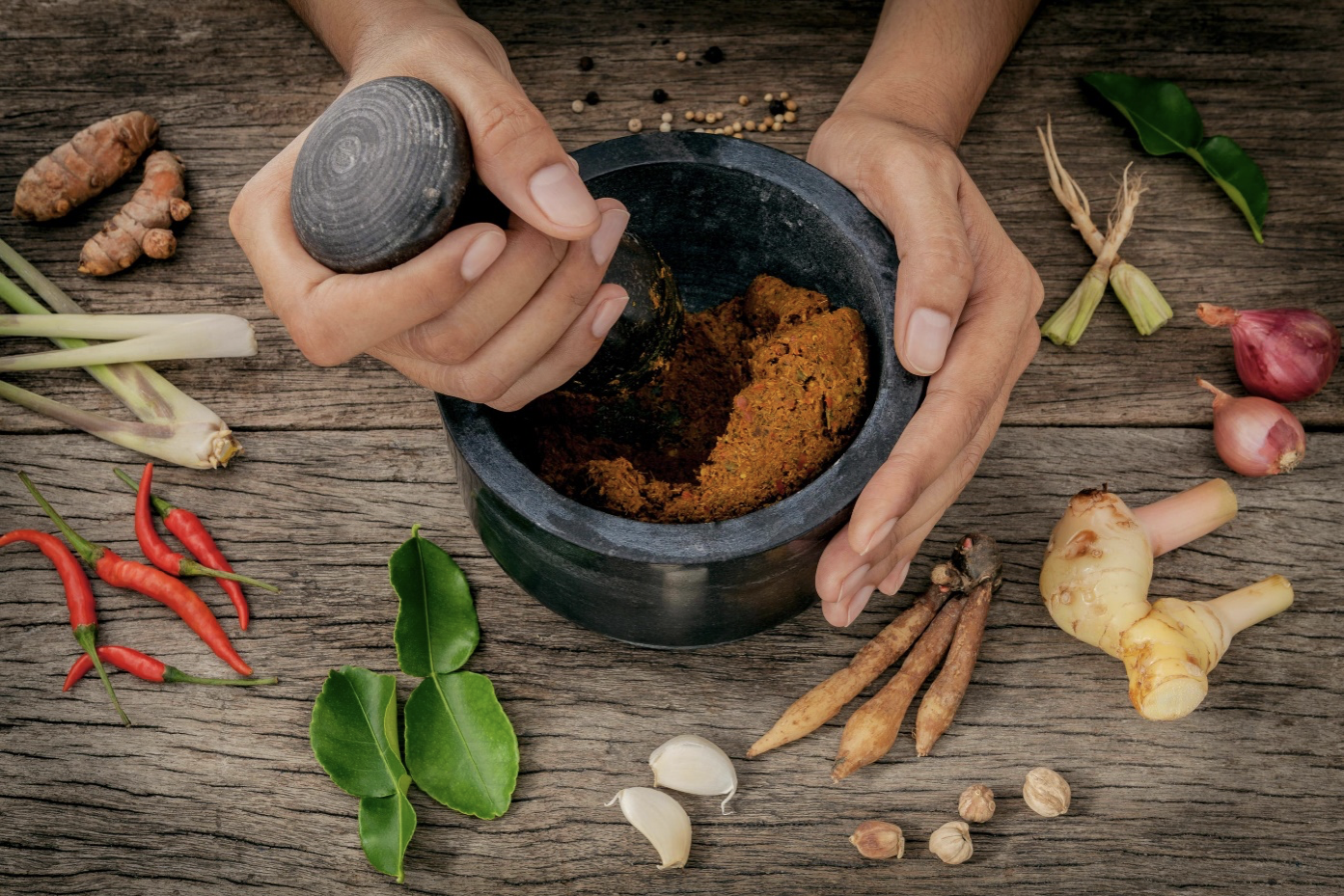
What tastes better when ingredients are made with a mortar and pestle? All sorts of aiolis, papaya salad, fried artichokes, tartar and pesto sauces, salad dressings, spicy chicken, curries, just to name a few things.
Max concluded this compelling article with counsel around which type to buy. As they come in all sizes and materials, the decision should be made relative to what you most often plan to do with it. The best all-purpose choice is made of porcelain—relatively light, good for big and small jobs, with a handy pour spout.
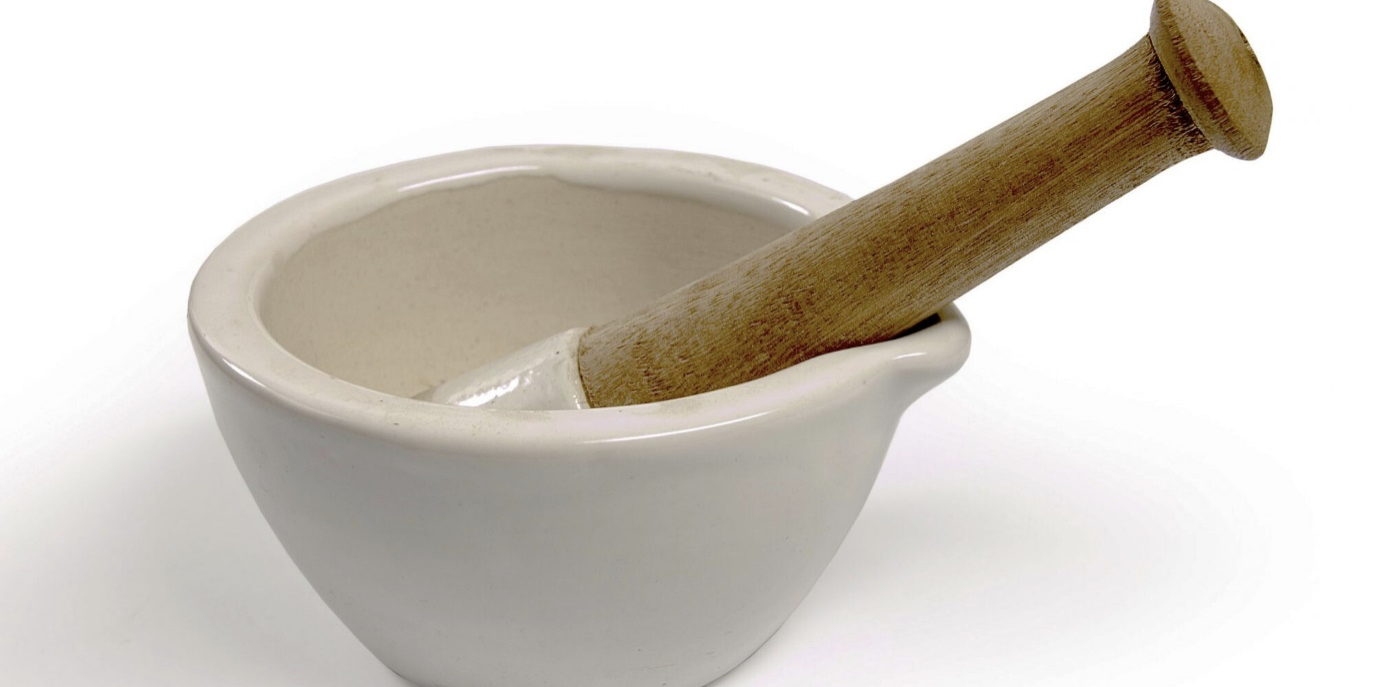
For a kitchen-to-table statement piece perfect for that guac, a large granite mortar is a nice choice. And a smaller one is perfect for creating spice mixes. Finally, you can find them lined with grooves (Japanese-style), which are harder to clean but make excellent work of grinding nuts and seeds into creamy pastes.
After a few weeks of pondering Max’s thoughts, I decided to get my own mortar and pestle. I chose a medium-sized marble style. And yes, it’s heavy and bulky and old fashioned, but Max was right: I was able to find a place for it and word around the table is that my cooking has improved!

Max says this: “A mortar and pestle is one of those stubborn kitchen implements that you never really need, and recipes usually offer substitutions (quite creatively even, look at you crushing black pepper with a frying pan), and you can live a fully happy, productive, ethically fulfilling life without one—so you never buy it. And your food is, for the most part, fine.
“But every once in a while you go into one of your cooking phases. Maybe you want to make coconut chutney or curry paste completely from scratch, even when the canned stuff is pretty decent, or you want to mash your guacamole like the restaurants do, tableside. Or you see a recipe call for a tablespoon of ginger-garlic paste and you just cannot, for the life of you, imagine that your cobbled-together version with finely minced ginger and garlic could be as good. So you begin to wonder, maybe I do need one of those, even though it’s heavy and bulky and you have nowhere to put it.”

Max isn’t alone in his opinion on this topic. Every pro chef and food author I researched said the same thing. Get one…it’s important; you’ll figure out where to put it and you’ll go on to be a better cook forever.
And this is because the mortar and pestle is just better at what it does than anything else. Whether you’re getting hardcore about making curry paste or simply mushing up some herbs to spread over a roast chicken, this basic kitchen tool makes it better. Better than the sharpest knife, fastest blender, or most vicious food processor.

Why is it better? Max says the sciencey reason is simple: “A mortar and pestle crushes plants while a blade cuts them. And if you want to expel all the essential oils, full-bodied flavors, and unique body of a hunk of garlic or leaf of basil, crushing is the way to go. Plants are made of rigid, boxy structures that trap vital flavor inside. You need to rupture them to release that flavor, and crushing does so far more effectively than the thin blade of a knife.
“A mortar and pestle also does the job, paradoxically, with far less bruising to herbs than you’d get from finely mincing them or running them through a food processor. Since a mortar and pestle moves only as fast as your hand can, it won’t generate heat through friction like a food processor would. Not only does the old-fashioned way extract more flavor than a spinning blade, but it’ll keep those flavors brighter, too. Take pesto recipes, for instance. The only variable that truly makes a difference in the sauce’s creaminess and basil-ness is mixing it all together in a mortar and pestle. And the difference is always dramatic: brighter colors, bigger flavors.”

There’s also the matter of amounts. Need to crush a tablespoon of black pepper, or mix up garlic, lemon, and herbs for a gremolata? Good luck doing that well in even the smallest food processor. Spice grinders (a.k.a. coffee grinders) also aren’t well suited to the job. But a mortar and pestle is. And it’ll mash those ingredients up into a quasi-paste better than anything else. Add in some olive oil and the ingredients will perfume it all the better, and with enough mashing you’ll get a beautiful creamy condiment to put on pretty much everything.

What tastes better when ingredients are made with a mortar and pestle? All sorts of aiolis, papaya salad, fried artichokes, tartar and pesto sauces, salad dressings, spicy chicken, curries, just to name a few things.
Max concluded this compelling article with counsel around which type to buy. As they come in all sizes and materials, the decision should be made relative to what you most often plan to do with it. The best all-purpose choice is made of porcelain—relatively light, good for big and small jobs, with a handy pour spout.

For a kitchen-to-table statement piece perfect for that guac, a large granite mortar is a nice choice. And a smaller one is perfect for creating spice mixes. Finally, you can find them lined with grooves (Japanese-style), which are harder to clean but make excellent work of grinding nuts and seeds into creamy pastes.
After a few weeks of pondering Max’s thoughts, I decided to get my own mortar and pestle. I chose a medium-sized marble style. And yes, it’s heavy and bulky and old fashioned, but Max was right: I was able to find a place for it and word around the table is that my cooking has improved!
Sources:
- www.saveur.com
- www.foodandwine.com
- www.thaifoodhow.com
- www.lakeshorelady.com
- www.vecteezy.com
- www.myrecipes.com
 Alice Osborne
Alice Osborne
Weekly Newsletter Contributor since 2006
Email the author! alice@dvo.com
